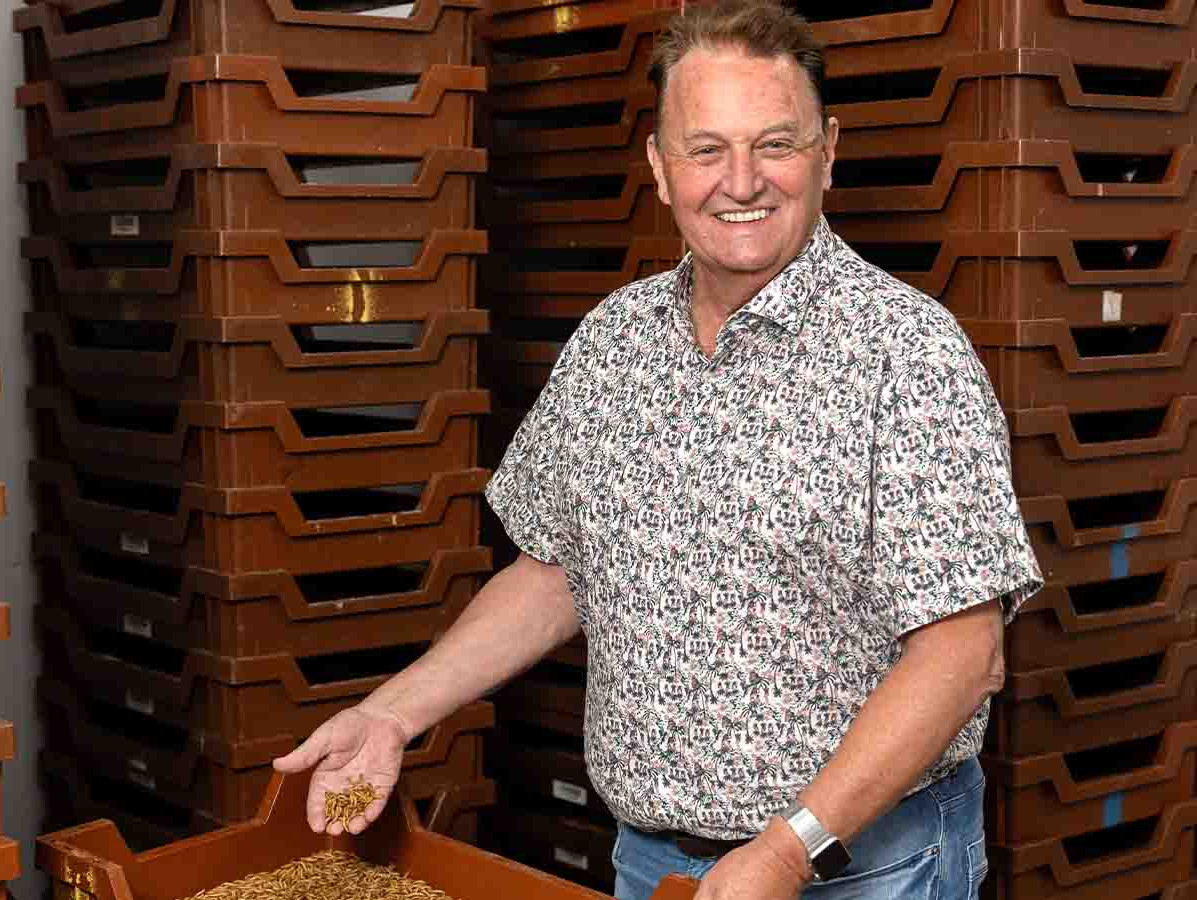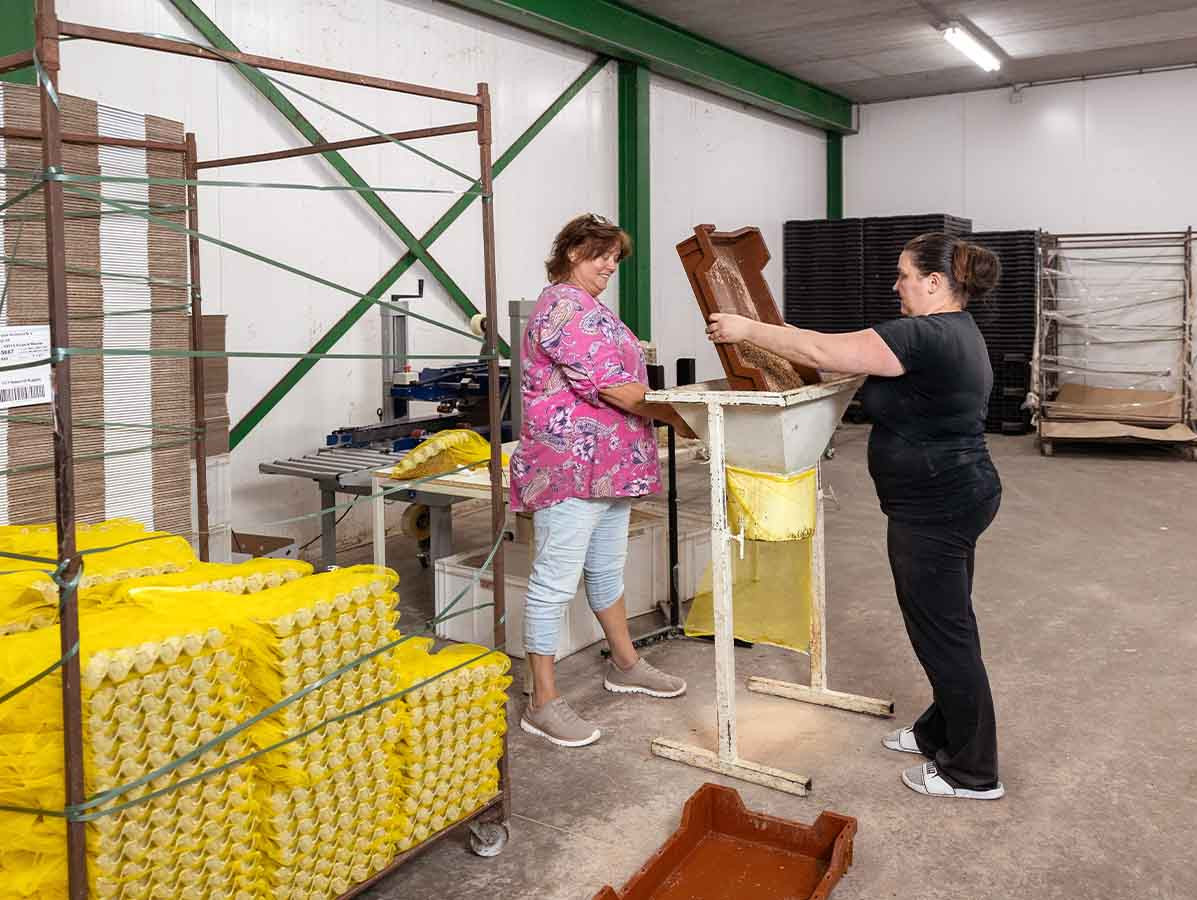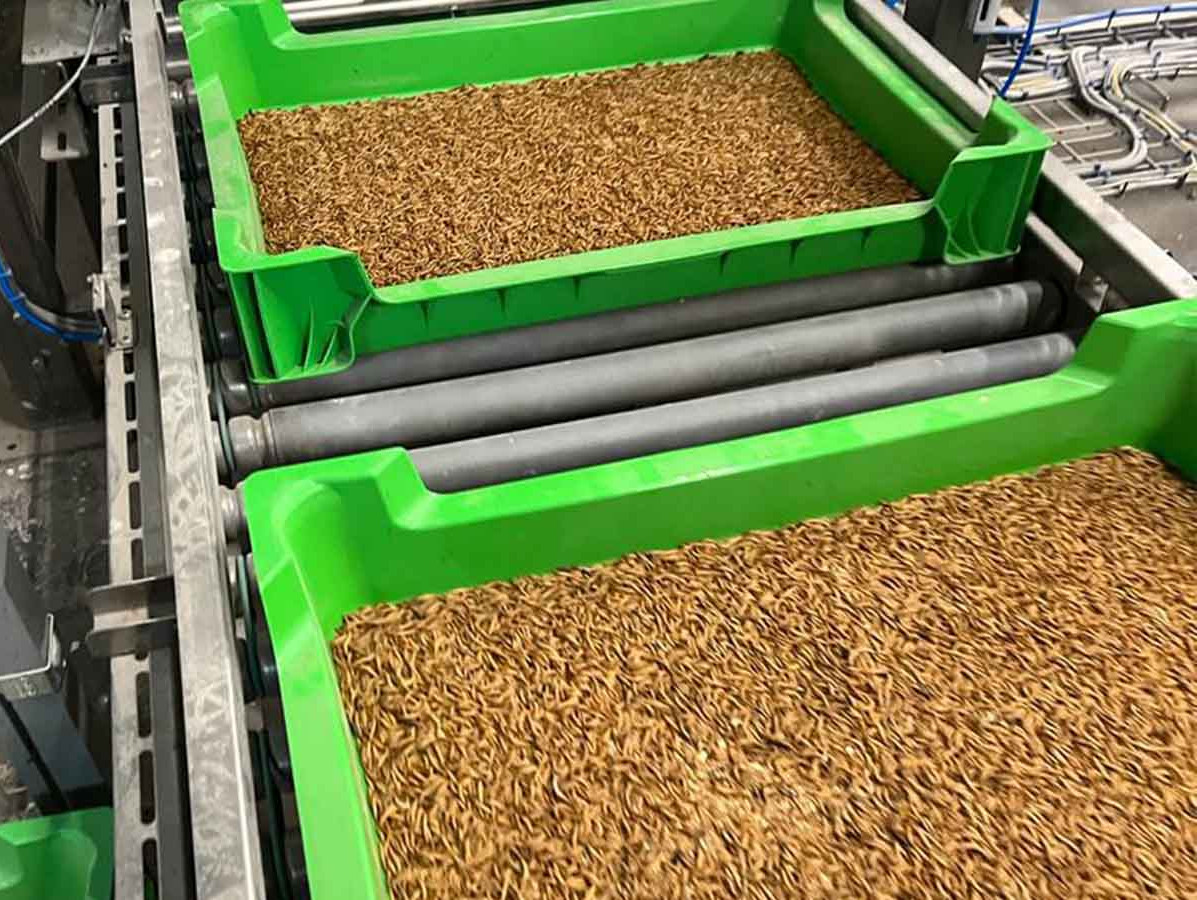
"Such a white mealworm has just moulted, deliciously soft. Try it," says Star Food CEO Wim Soetendaal. In addition to countless insects for animal feed, he now grows mealworms for human food. "The protein transition is urgent."
'The protein transition is inevitable. But regulation is too slow'
Stacked along the wall of Star Food's first insect farm in Barneveld are trays full of yellow-brown mealworms. Ready for transport to locations across Europe and far beyond. And among that itchy mass some white worms. Delicious, if 71-year-old Wim Soetendaal is to be believed. When I hesitate, he smiles encouragingly and nibbles one himself. So that's how you do it. There I go. It tickles, is slightly crunchy and turns out to be surprisingly tasty, fresh, nutty. I can't taste it very well; getting used to the idea still prevails. Swallowing is also exciting, I'll do that next time. But the aftertaste is creamy. Surprisingly tasty actually, and very high in protein. A matter of getting used to them and then we'll all eat them. How long will that last? Wim: "I've been eating them for 30 years, but I think the culture change will take another 10 years."
"I grew up raising cattle in Barneveld. Besides, angling has my interest. At that time, you could hardly get earthworms in summer. So I decided to start breeding them in 1985. The demand was great and a year later I was asked if I wanted to breed mealworms as well. One thing led to another. Since then, I have been breeding all kinds of insects: flies including fruit flies, rose chafer larvae, morios and buffalo worms, crickets and grasshoppers. Knowledge of these was limited; in Wageningen at the time, they mainly knew how to fight insects. So I figured out everything myself and that is exactly what I find interesting. I studied the behaviour of insects, why they ate more one day than another, the right breeding temperatures, their nutritional value per moment, how, when and what you can best feed them, all that kind of stuff."

Mealworm manure bagged in Barneveld. This manure is proving to be a good substitute for artificial fertilisers for grassland and grape growing, among others. Star Food turns it into pellets and uses them to fire the factory in Hungary, making it virtually energy-neutral.
"The location here was becoming too small and expanding here was financially and practically difficult. That's why I built the insect farm in Hungary in 1989. There, we now have eight barns on site and grow 20 tonnes of morios, buffalo and mealworms every week. Until 2019, I only grew insects for angling, as fish food and for pet food. And cockroaches for reptiles. Following my own idea, I developed feeding machines with VDL Agrotech. For instance, mealworms go in 60 x 80-centimetre trays, twenty crates high and two side by side over a conveyor belt. On that belt, they are fed within three minutes. The worms are harvestable in seven to eight weeks. My biggest customers for animal feed are in the United States, but sales are also big in Europe. Barneveld is now the distribution centre for that."
"That has everything to do with growth and protein transition. The EU has authorised four insects as human food, as novelty food: the yellow mealworm, grasshopper, buffalo worm and the house cricket. Anders Invest wants to contribute to the transition to reliable, affordable and fair food for the growing world population and does so partly by investing in companies that will make a difference. Star Food is one of them. Ideally, I leave much of the work to Anders Invest, with investment manager Evert Hein Schuiteman as contact person. We can spar just fine and complement each other and I can fully focus on further professionalising insect farming."
'We hope to introduce our insect burgers by the end of this year'
Mealworms for human food are a nice step, Wim laughs. "The trick will be to produce them at the right cost price. Those who manage to do so will be at the forefront of producing these novelty foods. The prerequisite is consistent quality. The composition is very important and will vary from producer to producer. The dried mealworms now coming from China have hardly any nutritional value. We feed mealworms with good quality wheat products and carrots. Do not underestimate the European Food Safety Authority EFSA, which is extremely strict and careful."

"Both adult insects and larvae and pupae are edible. They contain similar nutrients to meat, although of course this varies from insect to insect. A mealworm contains about 35% protein. You can enrich it to 80% absorbable protein, equivalent to milk protein. Insects can be boiled, baked, roasted or deep-fried. You can blanch, grind and possibly dry them - then you have flour for products such as sports drinks, shakes or biscuits. Some products are already on the market in the Netherlands. We hope to introduce our insect burgers by the end of this year."
Backlash is inevitable, Wim says somewhat resignedly. "Fake information and conspiracy theories pop up everywhere. You wouldn't be able to digest the fibre. True but you can't digest fibre from grains either, we eat them for our digestion. Insects are said to be unhealthy. But according to BCAA (Branched Chain Amino Acids) standards, they are actually very complete in terms of amino acids we need but cannot produce ourselves. Questions about animal-friendliness came up in the Lower House. So what applies to any animal also applies to insects. Only if you treat them well do they grow well. Moreover, breeding mealworms is definitely more sustainable than keeping cattle. The conversion is very favourable, with 1 to 2 kilos of feed for a kilo of insects. Besides, cattle require much more water and land area. So to get back to the question: in many countries it has always been common. We consider shrimps, which to a layman look like swimming grasshoppers, or raw herring and oysters ordinary. So yes, we need to think differently about these foods too."
"When you look at human consumption, it's ultimately about three things. First, the protein transition is inevitable. Star Food wants to be among the biggest and best producers and provide a good consistent product at a good price, focused on protein transition. Secondly, regulation is moving too slowly. You have to invest in your machinery. Nobody does that if the legislation is unclear. We are well on the way, partly because I like to explore new avenues and develop systems. And we cooperate internationally with companies like Ynsect because we share each other's vision on how to organise the protein transition in a healthy way. Thirdly, you need a Novel Food dossier per company and per type of insect. That takes about 2.5 years and easily costs a company 2.5 tonnes. Everything is described in it, from the rearing and raising of insects to the consequences when used for human consumption. All these things we are picking up. The world cannot wait. And neither can we."
Photos: ©Herbert Wiggerman
Source: Vakblad Voedingsindustrie 2023